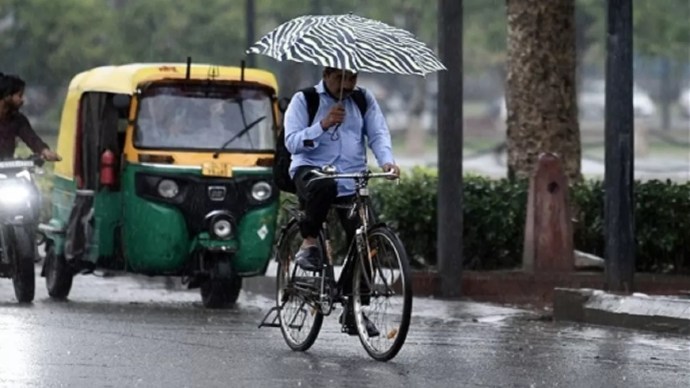As part of a key effort to promote energy efficiency and reduce the use of electricity, Union Minister Manohar Lal Khattar announced new provisions that will ultimately require air conditioners across India to operate only within a temperature range of 20°C and 28°C. This measure is designed to control energy consumption across residential and commercial areas of the country, particularly amidst increasing electricity demand and worsening heatwaves.
Manohar Lal Khattar said, “A new provision is being implemented soon regarding air conditioning standards. The temperature standardisation for ACs will be set between 20°C to 28°C, which means we will not be able to cool below 20°C or heat above 28°C.” The Minister called the move a “bold step” to combat inefficient cooling and excessive energy use due to setting air conditioning to unreasonably low temperatures.
What Do The New Rules Say?
The new directive from the Centre will limit the operational temperature range of all air conditioning, in homes and commercial spaces. Essentially, that means users will no longer be able to set air conditioning below 20°C, or above 28°C.
Many air conditioners currently on the market allow you to set your temperature as low as 16°C, or 18°C, and heating can be set to 30°C. Essentially, the new standards would mean manufacturers would need to reprogramme devices or give software updates to perform in the 20°C-28°C range. The government has expressed that implementation will be monitored, although very little information on enforcement, particularly across sectors, has been released.
Why Has The Government Taken This Measure?
The reasoning for this step relates to an overall national policy direction towards sustainable energy use. India is undergoing a rapid urbanisation of its middle class, their penetration and use of air conditioning is growing around 20% a year, resulting in dramatically increased electricity demand in peak summer months.
Air conditioning, especially at low temperatures, puts significant pressure on electricity grids. The Bureau of Energy Efficiency (BEE) states that “most Indians set their ACs at around 20-21°C, much lower than average required thermal comfort.” Either way you slice it, these practices can result in higher electricity bills – but they also result in higher emissions from the coal-fired power plants that supply most of India’s electricity.
The government is not only attempting to improve energy efficiency, reduce strain on the national electricity grid, and reduce greenhouse gas emissions, but is also attempting to change behaviour around the use of cooling systems by establishing a minimum setpoint of 20°C cooling and a maximum setpoint of 28°C heating. Rather than just compliance convenience by way of technology, the government hopes to improve related behavioural practices so people make responsible use of energy.
How Much Power Can You Save?
The Bureau of Energy Efficiency has always promoted sensible open source air conditioning. The Bureau of Energy Efficiency states that increasing your AC temperature by one degree will save you about 6 per cent electricity.
For example, at 20°C, increasing to 24°C may save you 24 per cent. After one summer, this could have implications for both a household electricity bill and the overall load on the national grid.
It is important to note that there is no need to cool a room to 16 degrees Celcius in a hot, humid country like India, nor is it healthy. Experts agree that comfort, regardless of humidity, ventilation, and clothing alone is between 24 degrees Celsius and 26 degrees Celsius. These guidelines are therefore based on real comfort levels and avoid causing any undue discomfort to occupants.
How does India Compare To The Rest Of The World?
India’s new AC temperature guidelines are mirrored by a global shift toward cooling indoor spaces in order to limit energy use and emissions. Countries, many in the European Union, have created new guidelines and regulations on similar measures, some as government mandates, others are public guidelines targeting energy use for public and commercial buildings.
Japan’s Ministry of Environment recommends air conditioners be set to 28°C for the summer months, particularly during the daytime working hours in the office. These recommendations are promoted through public awareness campaigns and many companies comply with the recommendations, but they are still considered voluntary recommendations.
Spain was more stringent on the matter by passing a law in 2022 stating that public buildings, offices, and businesses must maintain a cooling set point of no lower than 27°C. This regulation is part of Spain’s energy-saving plan in light of rising costs for electricity and the potential climate crisis.
In the United States, there is no regulation but the Energy Star program recommends households set air conditioners at 25.5°C (78°F) when the house is occupied, along with incentives and some awareness campaigns from electric utility companies.
Lastly, China requires that government buildings maintain a minimum cooling temperature of 26°C during the summer months, particularly, if this is the peak summer months. This regulation applies to government buildings and organizations and is mandatory with fines in place for non-compliance by public sector organizations.
Australia has shown some regulations regarding energy efficiency standards in air conditioners but have not implemented regulation on the thermostat settings regarding how cold an air conditioner can be set. The method of setting standards is through Minimum Energy Performance Standards (MEPS) where AHRI allowed units to only be sold in Australia if the units met some level of efficiency. However, there is no mandated thermostat setting in any national or local jurisdiction. Many workplaces and agencies will recommend the best comfort temperature between 22 °C and 24 °C, particularly for office work, but these recommendations are not enforceable.
Italy now mandates that public buildings (including schools and postal offices) for cooling purposes cannot go below 25 °C. These measures have been put in place to manage energy costs and control emissions, in sync with the EU climate targets.
Belgium, like Spain and Italy, have established minimum indoor climate standards for public buildings – cooling must not exceed 27 °C, while the maximum for heating in winter is 19 °C. These measures are legally enforceable and are part of a larger enforcement for energy responsibility for public building infrastructure.
India’s proposed range of 20°C to 28°C allows greater operational flexibility than in many other examples. Countries that allow 27°C for their public facilities, like Spain, or limits for industrial facilities, like China, have adopted more limited standards than India – as it is expected that India will apply this rule to residential, commercial and industrial facilities. India is not only catching up to global standards, it is potentially going farther to create a standardized and enforceable requirement meant to promote an equitable and enforceable national behavioral change.
Is This An Obligation Or An Effort?
Unlike past advisories set out by the Bureau of Energy Efficiency (for example, the 2018 recommendation to set a default to 24°C), Manohar Lal Khattar’s announcement concludes that the forthcoming rule will be replaced with a mandatory requirement. The timeline for implementation has yet to be announced publicly, however, the minister further confirmed a new regulation “will be implemented soon”, which is a big shift from its previous recommendation. Clarity on what will be enforced, the extent of the rules and whether the Departments of Energy will take compliance action as per their guidance manuals will follow shortly through a G.O. (government order).
Why A Simple Temperature Rule Could Lead To Big Energy Benefits
While restricting the temperature of air conditioning (AC) units feels like a small administrative change, it has major implications for energy security, climate targets, and cost savings to consumers.
For a nation like India, where searing summer temperatures lead to tremendous demand for artificial cooling, managing AC use is both practical and strategic. Aligning temperature limits with credible comfort thresholds, as well as internationally recognized standards, could meaningfully reduce emissions, address excessive energy use, and definitely lower millions of bills.
As India grows and faces climate extremes, such scalable interventions are going to be vital to the building of an energy efficient and energy just future.
Also Read: Photo Of Sonam Raghuvanshi With Raj Kushwaha Emerges; Brother Says ‘100% Sure She’s Guilty’












